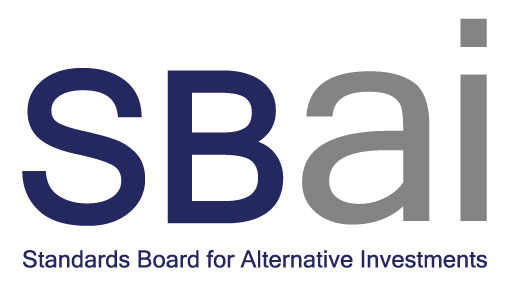Standards
Our Standards were created through collaboration between asset managers and institutional investors and are updated via public consultation to ensure they remain relevant.
Asset manager signatories sign up to our Standards on a “comply-or-explain” basis and disclose their conformity to investors upon request. Investor Chapter members promote adoption of our Standards through their conversations with asset managers.
New Consultation: CP5.1 Valuation Standards
Review of existing Standards and proposal for the addition of new Standards specific to Private Market Assets
The key objective of CP5.1 is to address the needs of closed-ended vehicles as part of the first phase of a comprehensive Standards review process that will take place throughout 2025.
The SBAI invites comments on this Consultation Paper which should be submitted by 30 June 2025 electronically (Word, pdf-document). Please click on the document below to see the full details.
Comply-or-Explain
Asset manager signatories achieve conformity with our Standards on a comply-or-explain basis. A Disclosure Statement (available to investors on request) details whether the asset manager is in compliance with the standard or explains why they are not.
Benefits to a Comply-or-Explain Approach:
- Allows the industry to retain its dynamic and diverse nature without requiring constant changes to our Standards.
- Provides flexibility where our Standards may differ from local laws or regulation.
- Using “explain” in addition to “comply” avoids our Standards being overly prescriptive or requiring a lengthy list of standards to cater for all potential signatories.
We do not publicly disclose an asset managers Disclosure Statement which indicates whether they have complied with a Standard or offered an explanation why not. Investors should be provided with this document upon request.
Summary of the Standards
Disclosure (Standards 1 – 4)
This section focuses on the areas that managers are expected to disclose to investors:
- Investment Policy: The fund’s investment strategy and the risks involved
- Commercial Terms: Such as fees and expenses, termination rights, and exit terms
- Performance Measurement: Material exposure to hard-to-value assets, methods used to value these assets, and the use of side-pockets
- Counterparty Reporting: Agreed informational reporting to counterparties, including lenders, prime brokers, and dealers
Valuation (Standards 5 – 8)
The area of valuation focuses on three major areas: segregation of functions in valuation, approach to handling and disclosure of hard-to-value assets and disclosure:
- Segregation of Valuation Functions: Appointment of an independent and competent third party valuation service providers, segregation of valuation from portfolio management, and a Valuation Policy Document outlining all aspects of the fund valuation process
- Approach to Hard-to-Value Assets: If valued in-house, the Valuation Policy Document should include details of a hierarchy of pricing sources, models, and broker quotes (if any) and the use of side pockets with fund governing body approval
- Investor Disclosure: Disclosure of governance arrangements. Disclosure of hard-to-value asset processes, including material increases in the percentage of hard-to-value assets in the portfolio and the value of any side pockets
Risk Management (Standards 9 – 20)
This section focuses on the creation of a risk framework setting out the governance structure and control processes, including limits to ensure compliance with the stated objective and strategy of the fund.
It also focuses on the following areas of risk management:
- Portfolio Risk: Key staff (portfolio managers, traders, risk managers and the fund governing body) should understand the risk management processes. The risk function should be segregated from portfolio management to manage conflicts of interest. Risk-monitoring reports should be regularly reviewed
- Liquidity Risk: Liquidity positions should be forecasted and tracked. Stress-testing and scenario analysis of the fund’s liquidity position should be conducted
- Market Risk: Measures should be in place to identify market risks. Regular stress-testing of the impact on the portfolio of extreme market occurrences should be conducted
- Counterparty Risk: A process for setting up trading relationships on behalf of the fund should be in place
- Operational Risk: Covering segregation of valuation, risk management, and compliance functions from portfolio management, documentation of operational procedures and staff training, internal controls to prevent misappropriation of client money, disaster recovery plans, IT security, and the implementation of local conduct of business rules and regulations
- Outsourcing Risk: Due diligence of third party service providers, including activities, names, funding arrangements, commercial terms, and control procedures
Fund Governance (Standards 21-22)
This section focuses on fund governance including:
- Composition: Appropriate composition of the Fund Governing Body
- Meetings: The Fund Governing Body should meet regularly and meetings should be documented
- Reporting: Regular reports on compliance with laws and regulations should be presented by the fund administrator
- Investor Consent: In the absence of a Fund Governing Body investor consent should be sought for any material changes to fees and expenses payable by the fund, redemption rights, or the fund’s stated strategy
Shareholder Conduct (Standards 23 – 28)
This section focuses on:
- Market Abuse: Policies on market abuse prevention and compliance procedures that can identify and prevent breaches of market abuse laws
- Proxy Voting: A proxy voting policy available to investors to review
- Stock Borrowing: Managers should not borrow stock to vote (noting that there are specific situations where it is acceptable)
Relevance of the Standards
The SBAI Alternative Investment Standards remain as relevant today as when they were created in 2008, if not more so. Recent industry events and regulatory actions continue to highlight the importance of having robust standards in place for disclosure, operations, compliance, and risk management.
Thought Pieces
Past Consultations
In line with our mandate, we respond to changes in industry practices and investor expectations by periodically consulting publicly on improvements to the Standards. Amendments that resulted from past consultations have been incorporated into the Standards.
Consultation 1: Redemptions
In 2008 and 2009, alternative investment funds faced significant investor redemptions. This coincided with a decrease in market values, reduced availability of credit or leverage, and reduced liquidity in certain market segments. This put significant strain on the liquidity position of certain funds resulting in some forced selling into depressed markets driving valuations even lower.
The Consultation Paper CP1 assessed potential systemic risk concerns and the negative externalities that can arise in these situations. Standards were proposed, along with guidance, to address these issues including improved disclosure on the handling of redemptions to ensure fair treatment of investors.
Consultation 2: Administration and Safekeeping
The Madoff scandal in 2008 highlighted the importance of independent fund administration for functions, such as Net Asset Value calculation, cash management, and transfer agency.
The Consultation Paper CP2 proposed Standards and guidance for stronger arrangements for the appointment of independent third party fund administrators and improved investor disclosure.
Consultation 3: Globalisation of the Standards
The Consultation Paper CP3 proposed Standards designed to ensure international relevance and strengthen the Standards in the light of a number of issues that became apparent during the financial crisis.
This proposed standards included a process for where there is no independent fund governing body in relation to handling changes to investment policy or commercial terms and disclosure of material developments in the strategy or business, litigation against the manager, and valuation.
Consultation 4: Managing Conflicts of interest
Conflicts of interest can arise between managers and investors and between different investors. These conflicts are usually caused by information asymmetries and/or a lack of alignment of interests. Consultation Paper CP4 focused specifically on conflicts of interest between parallel funds (including employee or partner only funds). The new Standards seek to strengthen managers’ arrangements to mitigate conflicts of interest and enhance disclosure to investors.
Investor disclosures added include:
- The existence of funds or accounts managed by the firm using the same or a similar strategy and any material adverse effect on the investors in the fund
- Manager co-investment in the fund
- Employee or partner only funds
- Trade allocation policy





